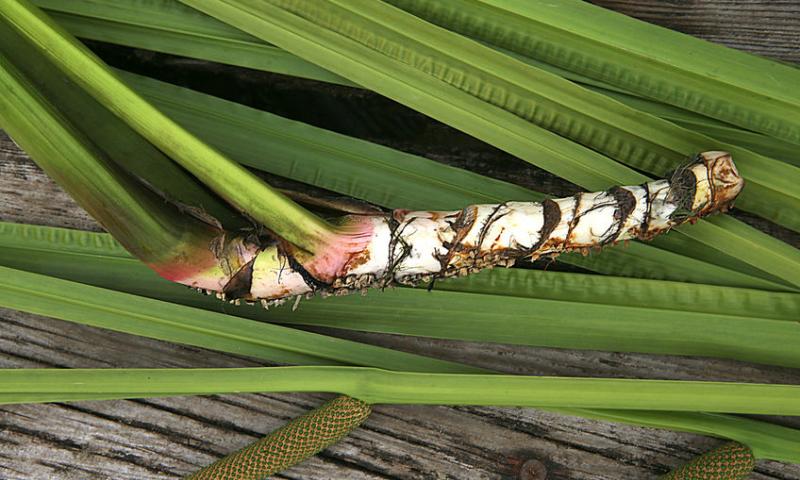 />
/>
Acorus Calamus, commonly known as sweet flag or calamus grows in Southeast Asia, Europe, North America. It grows along the banks of rivers and reservoirs, in swamps and marshy meadows. It is used as a spicy substitute for bay leaves, cinnamon and ginger, in medicine, food industry. Calamus is a perennial herb, 60-100 cm high.The rhizome is thick, cylindrical, horizontal, covered with thin fibrous roots. It reaches a length of up to 1.5 m. The rhizome and other parts of the plant have a characteristic strong odor. The stem is erect, unbranched, flattened, grooved on one side, and sharply ribbed on the other. The leaves are xiphoid. The flowers are small, green-yellow, collected in a cob 4–12 cm long. Calamus blooms in May and July. The fruit is a leathery red berry.
CHEMICAL COMPOSITION
Calamus rhizomes contain up to 3% essential oil, which contains monoterpenes (camphene, camphor, borneol) and sesquiterpenes (acoron, isoacoron, acoroxide, etc.), aromatic compounds (asarone, eugenol), etc.
glycoside acorin,
acoretin,
tannins,
ascorbic and palmitic acids,
starch,
choline,
vitamins,
iodine,
azarylaldehyde, which gives the rhizomes their specific odor.
Calamus herb is rich in starch, contains choline, resin, luceninone glycoside.
